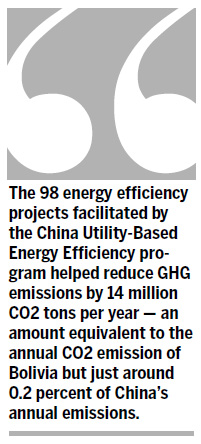Op-Ed Contributors
Reduced carbon emissions, more growth
By Vinod Thomas and Marvin Taylor-Dormond (China Daily)
Updated: 2010-07-28 08:00
 |
Large Medium Small |

One of the toughest challenges facing world development is how to promote economic growth and reduce emission of greenhouse gases (GHGs) in the atmosphere, and confronting climate change.
This problem is particularly acute for fast growing economies such as China, which are already burdened with vast GHG emissions.
While action is needed on multiple fronts, one way to drive growth and mitigate emissions simultaneously is to improve energy efficiency - an approach promising a win-win outcome.
Not surprisingly, China has made improvements in energy efficiency a top national priority. The International Finance Corporation (IFC), a part of the World Bank Group, initiated investments through China Utility-Based Energy Efficiency (CHUEE) program in 2006. Evaluative findings from this program provide lessons for China and other countries.
The program was designed to address a two-fold gap; one concerning the adequacy of financing for energy efficiency, and the other relating to knowledge about the possibilities of achieving greater energy efficiency. The program sought to provide over $200 million in bank guarantees for energy efficiency loans and about $8 million in technical assistance to help banks give more than $500 million in loans to energy efficiency projects, and enable energy management companies to improve operations.
The 98 energy efficiency projects facilitated by the CHUEE program helped reduce GHG emissions by 14 million CO2 tons per year - an amount equivalent to the annual CO2 emission of Bolivia but just around 0.2 percent of China's annual emissions.
Much of this success is attributable to China's setting up of a supportive policy framework and specifically the introduction of regulations that gave incentives to companies to make these investments.
How effective is a program such as CHUEE in generating additional energy efficiency? On one hand, the fact that just 9 percent of companies would not have invested in energy efficiency without CHUEE indicates a rather modest contribution of the program. But on the other, the net social benefits from the sharp reduction of carbon emissions and energy savings were high, generating an economic rate of return of 38 percent. These social returns included private returns estimated at 20 percent, reflecting the win-win nature of these types of investments.